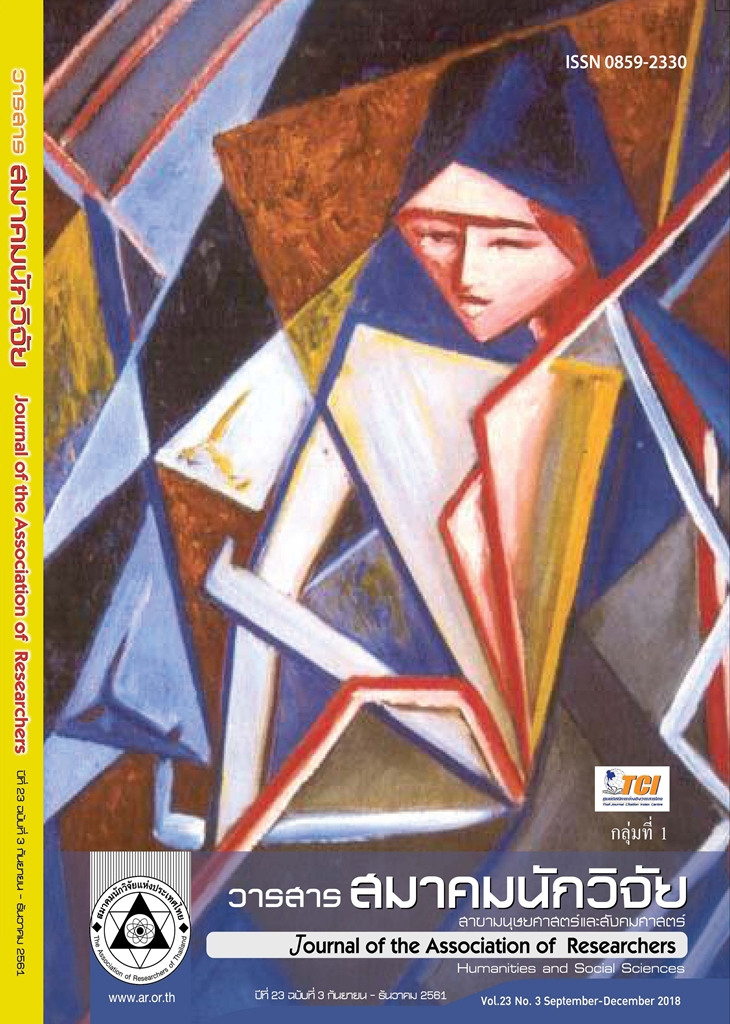(RETRACTED ARTICLE) Small and Medium Enterprises (SMEs) Business Development Model that Affects the Success in Muang, Chonburi Province
Main Article Content
Abstract
A study of the development pattern of small and medium enterprises (SMEs) affecting the success in Muang District, Chonburi Province. The purpose of this study was to study 1. The success of SMEs business, which is divided into 3 aspects: Respect 2. Business development models the internal development model and the external development model of the business includes personnel systems, financial systems, marketing systems, management systems, customer systems, competition systems, economic systems, political and legal systems, and technology systems. The importance of the success of SMEs. 3. The power of forecasting of internal development. And the external development model of SMEs. Influence the success of SMEs. Collected questionnaires were used by SMEs in urban areas. Chonburi was registered with the Chonburi Business Development Office for the year 2016 the number of 1560 businesses were randomly sampled. Descriptive statistics and stepwise multiple regression analysis. The results of the study are as follows: 1. Internal development model And the external development model of the business. It is found that the overall development pattern is at the highest level (M= 4.85). It is found that the personnel system is the most important (M= 4.15). Overall, the significance level was at high level (M= 4.05). The technology was at the highest level (M= 4.08). 3. The success of SMEs was Most (M=4.95) found that the success of the business. Most of the respondents (M= 3.85) followed by firm security (M= 3.83) and reputation (M= 3.80). 2. Marketing system, customer system Technology, financial systems, and personnel systems can predict the success of the SMEs business in terms of security, statistically significant at .001 It can predict the success of SMEs business with predictive power 0.498, with all systems moving in a positive direction with stability, except for personnel systems that have a negative impact on security. 1. Management System, Marketing Management System and Customer System. It can predict the success of SMEs in terms of acceptability as statistically significant. .001. It can predict the success of SMEs with the predictive power of 0.375. All systems result in positive direction with respect. 2. Management systems, systems, customer systems, marketing systems, and management can predict the success of SMEs in terms of reputation .001. It can predict the success of SMEs, with the predictive power of 0.446. All systems have a positive effect on the reputation, except for the personnel system that results in a negative direction with reputation.
Article Details

This work is licensed under a Creative Commons Attribution-NonCommercial-NoDerivatives 4.0 International License.
บทความที่ปรากฏในวารสารนี้ เป็นความรับผิดชอบของผู้เขียน ซึ่งสมาคมนักวิจัยไม่จำเป็นต้องเห็นด้วยเสมอไป การนำเสนอผลงานวิจัยและบทความในวารสารนี้ไปเผยแพร่สามารถกระทำได้ โดยระบุแหล่งอ้างอิงจาก "วารสารสมาคมนักวิจัย"
References
นิภาภรณ์ จงวุฒิเวศย์. (2553). รูปแบบการพัฒนาที่ส่งผลต่อความสำเร็จในการดำเนินงานของธุรกิจชุมชน ในเขตอำเภอ เมือง จังหวัดร้อยเอ็ด. วารสารมหาวิทยาลัยราชภัฏมหาสารคาม.
ชุติมา หวังเบ็ญหมัดและคณะ. (2557). ปัจจัยแห่งความสำเร็จของการประกอบการธุรกิจขนาดกลางและขนาดย่อม (SMEs) ในอำเภอหาดใหญ่ จังหวัดสงขลา.วารสารวิทยาการจัดการ.
ปุณฑริกา สุคนธสิงห์. (2557). ทำการศึกษา “ปัจจัยทีี่ส่งผลต่อความสำเร็จของกลุ่มอาชีพ : กรณีศึกษากลุ่มอาชีพผลิตภัณฑ์ จากผ้าในเขตจังหวัดเพชรบูรณ์.
รุ่งนภา ต่ออุดม. (2556). รูปแบบการพัฒนาความสำเร็จของผู้ประกอบการธุรกิจขนาดกลางและขนาดย่อมในอุตสาหกรรม เกษตร จังหวัดฉะเชิงเทรา. วารสารบริหารธุรกิจ ราชมงคลธัญบุรี.
สถาบันพัฒนาวิสาหกิจขนาดกลางและขนาดย่อม. (2559). เครือข่ายมหาวิทยาลัยสงขลานครินทร์“ ศักยภาพในการปรับ ตัวของผู้ประกอบการณ์ธุรกิจ SMEs เพื่อรองรับการเปิดเสรีทางการค้า.
References
Meechamnan, N. (2011). Marketing strategies of flowers and garden trees traders: a case study of Dong Bung Village, Muang District, Prachinburi Province. Master of Business Administration in Marketing, Faculty of business administration, Rajamangala University of Technology Thanyaburi.
Sulin B. and Wayne, C.J. (2008). An Exploratory Study of the Impact of e-Service Process. on Online Customer Satisfaction, retrieved from Website: papers.ssrn.com Yamane, Taro. (1973). Statistics: an introductory analysis. New York: Harper and Row.
Translated Thai References
Jonwuwet T. (2010). Development patterns that affect the success of business operations. Community in Amphoe Mueang Roi ed. Journal of Mahasarakham Rajabhat University. (in Thai).
Promsaka N SakonNakhon T. (2010). Organizational Development of Small and Medium Enterprises in the Northeastern Region of Thailand. Research Report of Department of Education Faculty of Art.Prince of Songkla University. (in Thai).
Small and Medium Enterprises Development Institute. (2016). Prince of Songkla University Network” Potential for the adaptation of SMEs entrepreneurs to support trade liberalization. (in Thai).
SukontonSingh P. (2014). Factors affecting the success of occupational groups: case study. Career Products The fabric of Phetchabun. (in Thai). Torudom R. (2014). Development model of successful small and medium enterprises. Small scale in agro-industry Chachoengsao. Journal of Business Administration Thawee. (in Thai).
Wangbenmad C. (2015). The success factor of medium and small business Small (SMEs) in Hat Yai Song Kra. Journal of Management Science. (in Thai).
Torudom R. (2014). Development model of successful small and medium enterprises. Small scale in agro-industry Chachoengsao. Journal of Business Administration Thawee. (in Thai).
Wangbenmad C. (2015). The success factor of medium and small business Small (SMEs) in Hat Yai Song Kra. Journal of Management Science. (in Thai).


